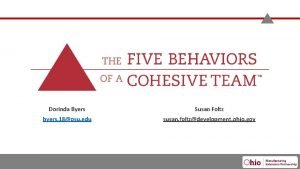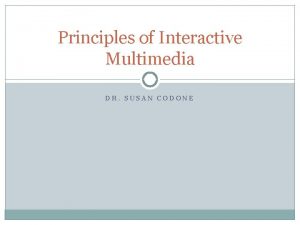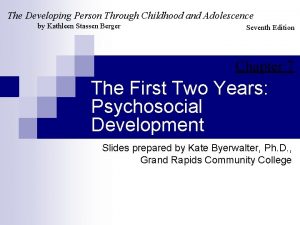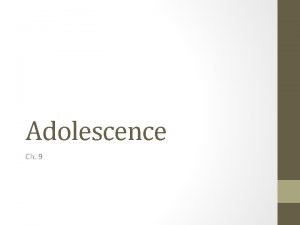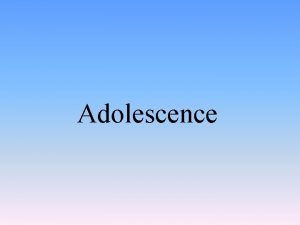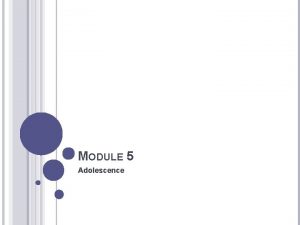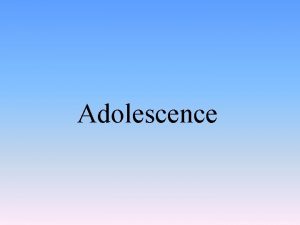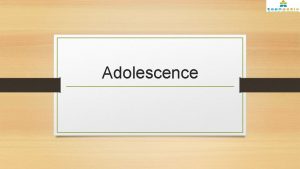Faces of Adolescence SelfPortrait Dorinda Vigil Margaret Wiedner
















- Slides: 16

Faces of Adolescence: Self-Portrait Dorinda Vigil, Margaret Wiedner, Lauren Madrid, Chandreyee Johnson

What did my adolescence feel like? Exploring our perspectives of how being a teenager felt on three major levels.

BIOLOGICAL Lauren � Height differences ◦ Awkwardness with self and peers � Build ◦ Athletic ability � Continuing fitness body ◦ Addicted to working out

SOCIALLY Dorinda � Popular ◦ Made friends easily � Social Influences (? ) ◦ Drug use � Participated activities ◦ Cheerleader in peer

PSYCHOLOGICALLY Margaret � Self-Esteem ◦ Polymyositis � Felt belittled by peers(? ) ◦ Bullied � Low body image ◦ Insecure about weight

Major changes, major impacts, and the facts The highlighted changes we experienced, how we felt, and how those relate to the facts.

BIOLOGICAL LAUREN � Height ◦ Still continued to grow past my peers � Build FACTS � Adolescent females and self-criticism � Physical Changes ◦ Hair growth, voice change, growth spurts, breast development, sex gland development, skin changes, brain and hormone development, menstruation � Depression ◦ Typical vs. atypical

SOCIAL DORINDA � Self-Reliance ◦ Emotional and economic independence � Social butterfly ◦ Continued to flawlessly fit in with peers � Decision Making ◦ Balancing peers, work, school, and family � Accepting Criticism FACTS ◦ Identity establishment ◦ Social roles � Knowing where they belong ◦ Self-Esteem ◦ Inner Strength ◦ Peer Relationships ◦ Parental independence, expansion of social life

PSYCHOLOGICAL MARGARET � Isolation from peers � Insecurities weight about FACTS � Sensitive to criticism � Depression � Changes in brain � Hormones

Gender differences Perspectives on gender differences and the facts of those differences

BIOLOGICAL FEMALES � Brain development ◦ Less � Sexual Activity ◦ Emotional MALES � Brain development ◦ More � Sexual Activity ◦ Physical

SOCIAL FEMALES � Eating Disorders ◦ Anorexia, Bulimia, Overeating � Gangs MALES ◦ Violence

PSYCHOLOGICAL FEMALES � Emotional � Moral MALES • Dominant • Justice/logical

LEARNING TEAM PERSPECTIVE AGREEMENTS � Adolescent females are aggressive � Internal pressure to be liked socially � Hormones and developmental progress potentially cause self-esteem issues DISAGREEMENT � Social lives

CONCLUSION Being a teenager is no easy task. Males and females alike battle a range of issues from self-esteem, establishing independence, developing relationships with peers, and preparation for transitioning into adulthood. With proper guidance, skills, and patience adolescents can successfully make the transition into adulthood smoothly.

References � � Zastrow, Charles. H. , & Kirst-Ashman, Karen. (2010). Understanding Human Behavior and the Social Environment (8 th Edition). Cengage Learning. De Bellis, M. D. , Keshavan, M. S. , Beers, S. R. , Hall, J. , Frustaci, K. , Masalehdan, A. , Knoll, J. , Boring, A. M. (2001). Sex Differences in Brain Maturation During Childhood and Adolescence. OXFORD JOURNALS, 11(6), . doi: 10. 1093/cercor/11. 6. 552 Social Development during the teen years. (2009). Retrieved from http: //my. clevelandclinic. org/childrens-hospital/healthinfo/ages-stages/adolescence/hic-Social-Development-Duringthe-Teen-Years Kelly, S. (2010). The Psychological Consequences to Adolescents of Exposure to Gang Violence in the Community: An Integrated Review of the Literature. JOURNAL of CHILD and ADOLESCENT PSYCHIATRIC NURSING, 23(2), . doi: 10. 1111/j. 17446171. 2010. 00225. x
 Dirk wiedner
Dirk wiedner Conclusiones de un terremoto
Conclusiones de un terremoto Menade skopas
Menade skopas Susan foltz
Susan foltz Susan codone
Susan codone Serpentis hidden hideaway
Serpentis hidden hideaway Schoolager
Schoolager Centro vigil
Centro vigil Dr carlos vigil
Dr carlos vigil Edification definition to kill a mockingbird
Edification definition to kill a mockingbird Chapter selection
Chapter selection Mariah vigil
Mariah vigil Vigil enfermagem
Vigil enfermagem Which shape has 6 faces and 12 edges
Which shape has 6 faces and 12 edges Adolescence and emerging adulthood a cultural approach
Adolescence and emerging adulthood a cultural approach Social changes in adolescence
Social changes in adolescence The developing person through childhood and adolescence
The developing person through childhood and adolescence



